Forward Behavioral Modeling of a Three-Way Amplitude Modulator-Based Transmitter Using an Augmented Memory Polynomial
Abstract
:1. Introduction
2. The Mixer-Less Three-Way Amplitude Modulator-Based Transmitter Architecture
2.1. The Mixer-Less Three-Way Amplitude Modulator-Based Transmitter
2.2. Signal Decomposition (Three Coordinate)
3. Forward Behavioral Model for the Mixer-Less Three-Way Amplitude Modulator-Based Transmitter
4. Implementation of Mixer-Less Three-way Amplitude Modulator-Based Transmitter
5. Measurement Results
6. Conclusions
Acknowledgments
Author Contributions
Conflicts of Interest
Appendix A
References
- Gu, Q. RF System Design of Transceivers for Wireless Communications; Springer: Berling/Heidelberg, Germany, 2005. [Google Scholar]
- Carrara, F.; Palmisano, G. High-efficiency reconfigurable RF transmitter for wireless sensor network applications. In Proceedings of the 2010 IEEE Radio Frequency Integrated Circuits Symposium, Anaheim, CA, USA, 23–25 May 2010; IEEE: Piscataway, NJ, USA, 2010. [Google Scholar]
- Zheng, N.; Kim, J.; Mazumder, P. A low-power reconfigurable CMOS power amplifier for wireless sensor network applications. In Proceedings of the 2014 IEEE International Symposium on Circuits and Systems (ISCAS), Melbourne, Australia, 1–5 June 2014; IEEE: Piscataway, NJ, USA, 2014; pp. 1086–1089. [Google Scholar]
- Hori, S.; Kunihiro, K.; Hayakawa, M.; Fukaishi, M. A 0.3-3GHz reconfigurable digital transmitter with multi-bit envelope ΣΔ modulator using phase modulated carrier clock for wireless sensor networks. In Proceedings of the 2012 IEEE Radio Frequency Integrated Circuits Symposium, Montreal, QC, Canada, 17–19 June 2012; IEEE: Piscataway, NJ, USA, 2012; pp. 105–108. [Google Scholar]
- Mitola, J. The software radio architecture. IEEE Commun. Mag. 1995, 33, 26–38. [Google Scholar] [CrossRef]
- Morgan, D.R.; Ma, Z.; Kim, J.; Zierdt, M.G.; Pastalan, J. A Generalized Memory Polynomial Model for Digital Predistortion of RF Power Amplifiers. IEEE Trans. Signal Process. 2006, 54, 3852–3860. [Google Scholar] [CrossRef]
- Gadringer, M.E.; Silveira, D.; Magerl, G. Efficient Power Amplifier Identification Using Modified Parallel Cascade Hammerstein Models. In Proceedings of the 2007 IEEE Radio and Wireless Symposium, Long Beach, CA, USA, 9–11 January 2007; IEEE: Piscataway, NJ, USA, 2007; pp. 305–308. [Google Scholar]
- Liu, T.; Boumaiza, S.; Ghannouchi, F.M. Augmented hammerstein predistorter for linearization of broad-band wireless transmitters. IEEE Trans. Microw. Theory Tech. 2006, 54, 1340–1349. [Google Scholar] [CrossRef]
- Hammi, O. Modeling and Linearization of Nonlinear RF Power Amplifiers/Transmitters for Multi-Carrier Wireless Communication Systems. Ph.D. Thesis, University of Calgary, Calgary, AB, Canada, June 2008. [Google Scholar]
- Luongvinh, D.; Kwon, Y. A Fully Recurrent Neural Network-Based Model for Predicting Spectral Regrowth of 3G Handset Power Amplifiers with Memory Effects. IEEE Microw. Wirel. Compon. Lett. 2006, 16, 621–623. [Google Scholar] [CrossRef]
- Safari, N.; Roste, T.; Fedorenko, P.; Kenney, J.S. An Approximation of Volterra Series Using Delay Envelopes, Applied to Digital Predistortion of RF Power Amplifiers with Memory Effects. IEEE Microw. Wirel. Compon. Lett. 2008, 18, 115–117. [Google Scholar] [CrossRef]
- Zhu, A.; Pedro, J.C.; Brazil, T.J. Dynamic Deviation Reduction-Based Volterra Behavioral Modeling of RF Power Amplifiers. IEEE Trans. Microw. Theory Tech. 2006, 54, 4323–4332. [Google Scholar] [CrossRef]
- Isaksson, M.; Wisell, D.; Ronnow, D. A comparative analysis of behavioral models for RF power amplifiers. IEEE Trans. Microw. Theory Tech. 2006, 54, 348–359. [Google Scholar] [CrossRef]
- Sarbishaei, H.; Fehri, B.; Hu, Y.; Boumaiza, S. Dual-Band Volterra Series Digital Pre-Distortion for Envelope Tracking Power Amplifiers. IEEE Microw. Wirel. Compon. Lett. 2014, 24, 430–432. [Google Scholar] [CrossRef]
- Rawat, M.; Ghannouchi, F.M.; Rawat, K. Three-Layered Biased Memory Polynomial for Dynamic Modeling and Predistortion of Transmitters with Memory. IEEE Trans. Circuits Syst. Regul. Pap. 2013, 60, 768–777. [Google Scholar] [CrossRef]
- Aziz, M.; Rawat, M.; Ghannouchi, F.M. Rational Function Based Model for the Joint Mitigation of I/Q Imbalance and PA Nonlinearity. IEEE Microw. Wirel. Compon. Lett. 2013, 23, 196–198. [Google Scholar] [CrossRef]
- Aziz, M.; Rawat, M.; Ghannouchi, F.M. Low Complexity Distributed Model for the Compensation of Direct Conversion Transmitter's Imperfections. IEEE Trans. Broadcast. 2014, 60, 568–574. [Google Scholar] [CrossRef]
- Ghannouchi, F.M.; Younes, M.; Rawat, M. Distortion and impairments mitigation and compensation of single- and multi-band wireless transmitters (invited). Antennas Propag. IET Microw. 2013, 7, 518–534. [Google Scholar] [CrossRef]
- Veetil, S.I.; Helaoui, M. Discrete Implementation and Linearization of a New Polar Modulator-Based Mixerless Wireless Transmitter Suitable for High Reconfigurability. IEEE Trans. Circuits Syst. Regul. Pap. 2015, 62, 2504–2511. [Google Scholar] [CrossRef]
- Veetil, S.I.; Helaoui, M. Highly Linear and Reconfigurable Three-Way Amplitude Modulation-Based Mixerless Wireless Transmitter. IEEE Trans. Microw. Theory Tech. 2017, 99, 1–8. [Google Scholar] [CrossRef]
- Chatrath, J. Behavioral Modeling of Mixerless Three-Way Amplitude Modulator-Based Transmitter. Master Thesis, University of Calgary, Calgary, AB, Canada, June 2017. [Google Scholar]
- 10 MHz to 3 GHz VGA with 60 dB Gain Control Range. Available online: www.analog.com/media/en/technical-documentation/data-sheets/ADL5330.pdf (accessed on 26 February 2018).
- Rawat, M.; Rawat, K.; Ghannouchi, F.M. Adaptive Digital Predistortion of Wireless Power Amplifiers/Transmitters Using Dynamic Real-Valued Focused Time-Delay Line Neural Networks. IEEE Trans. Microw. Theory Tech. 2010, 58, 95–104. [Google Scholar] [CrossRef]
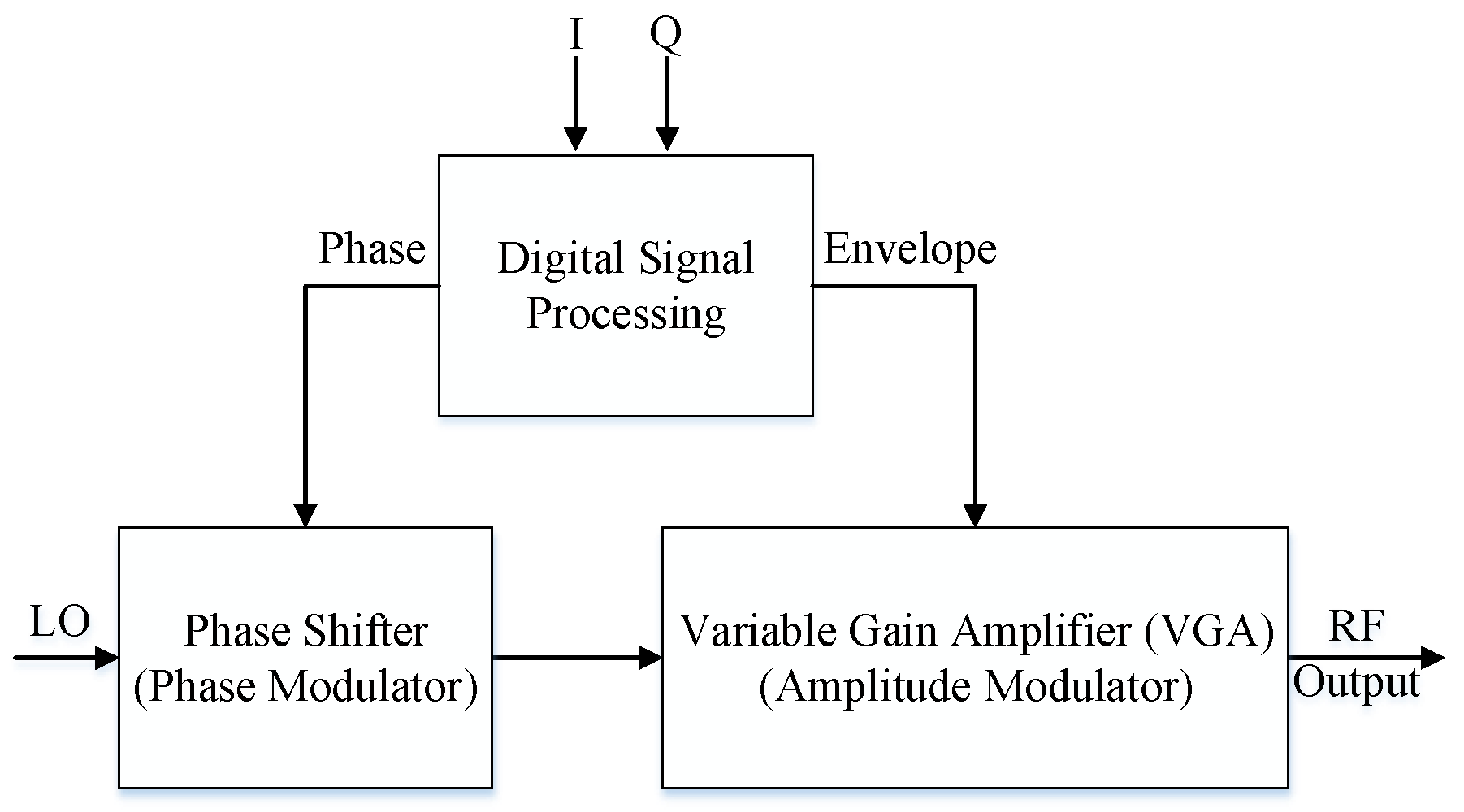
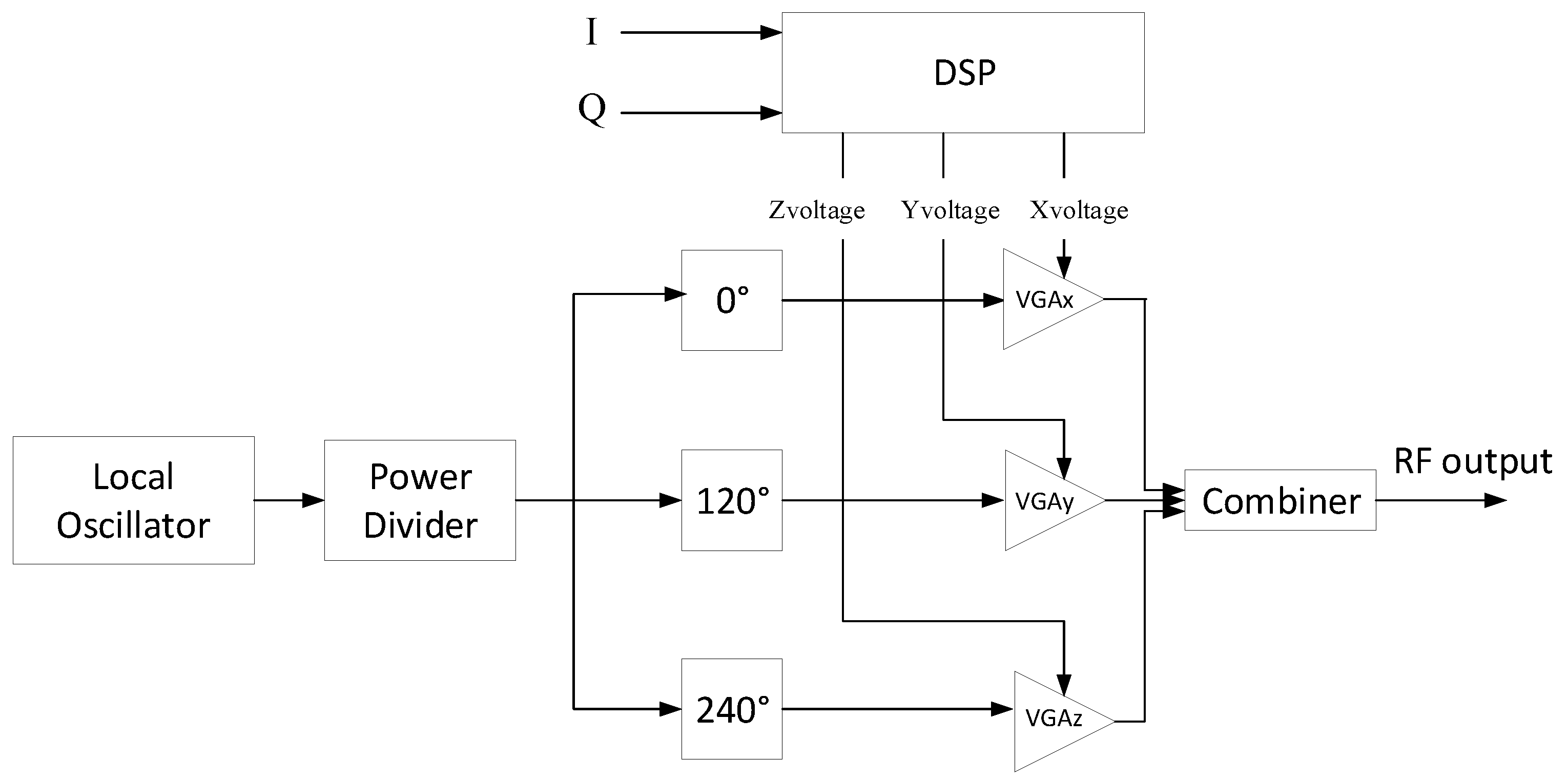

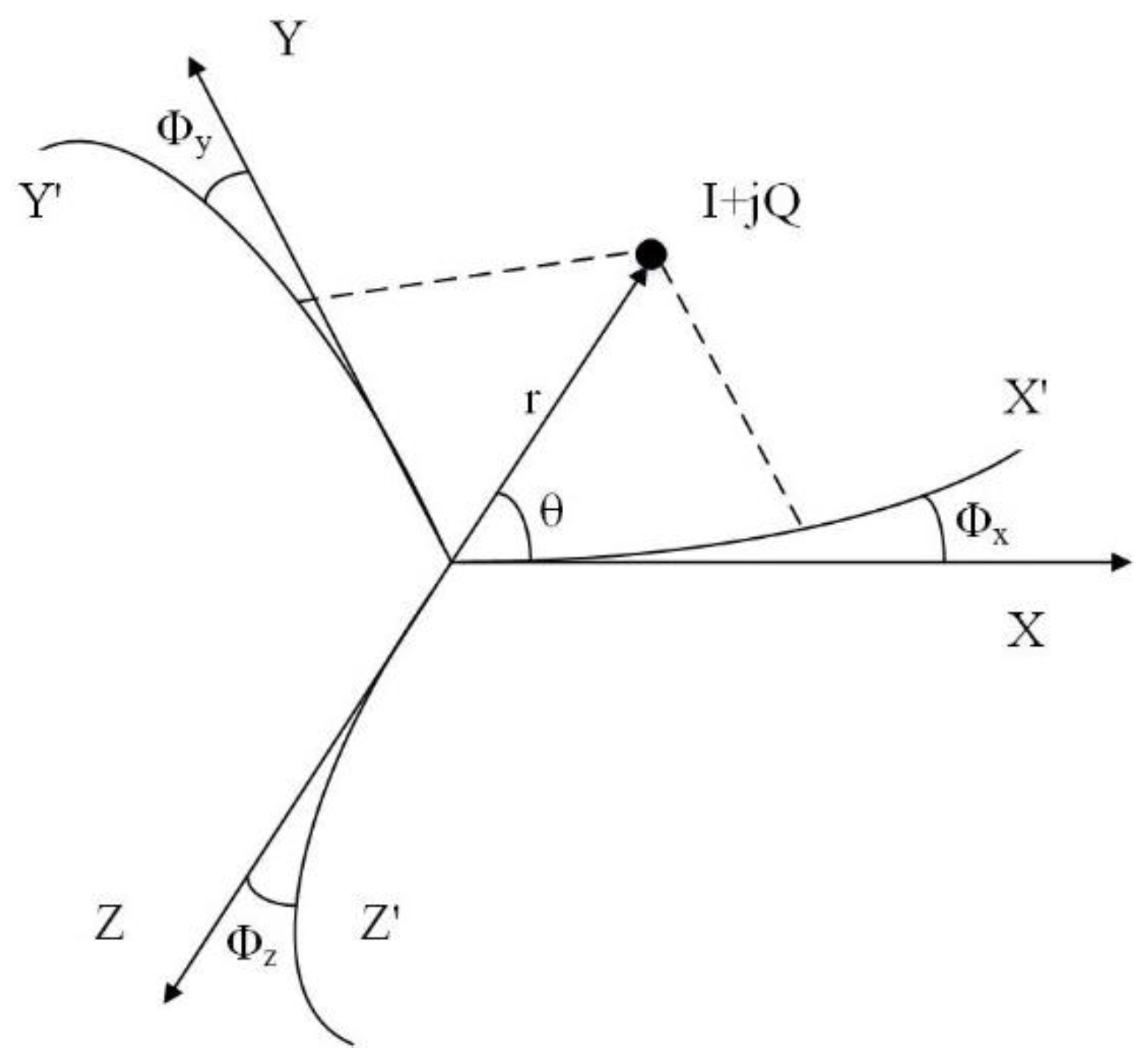

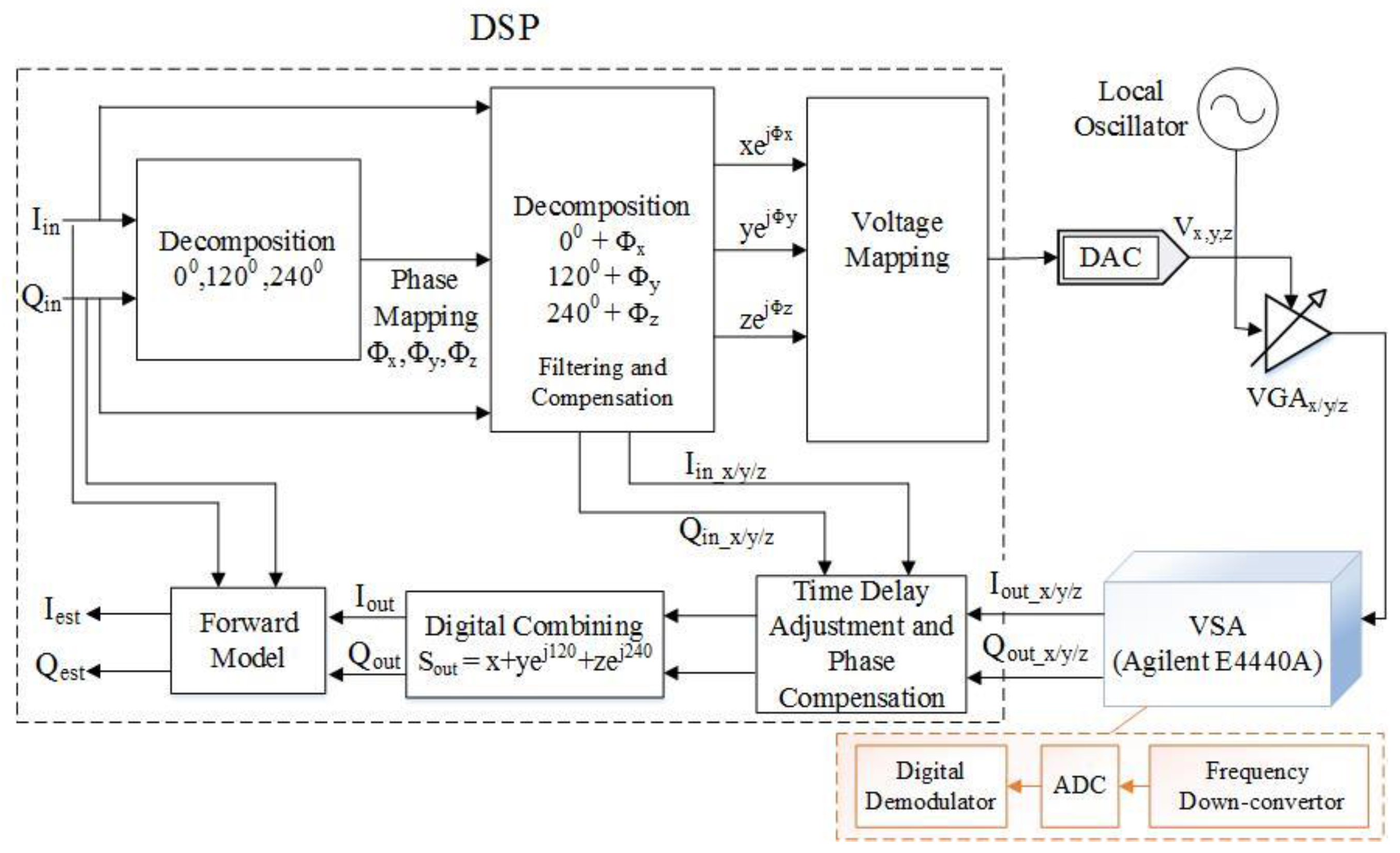
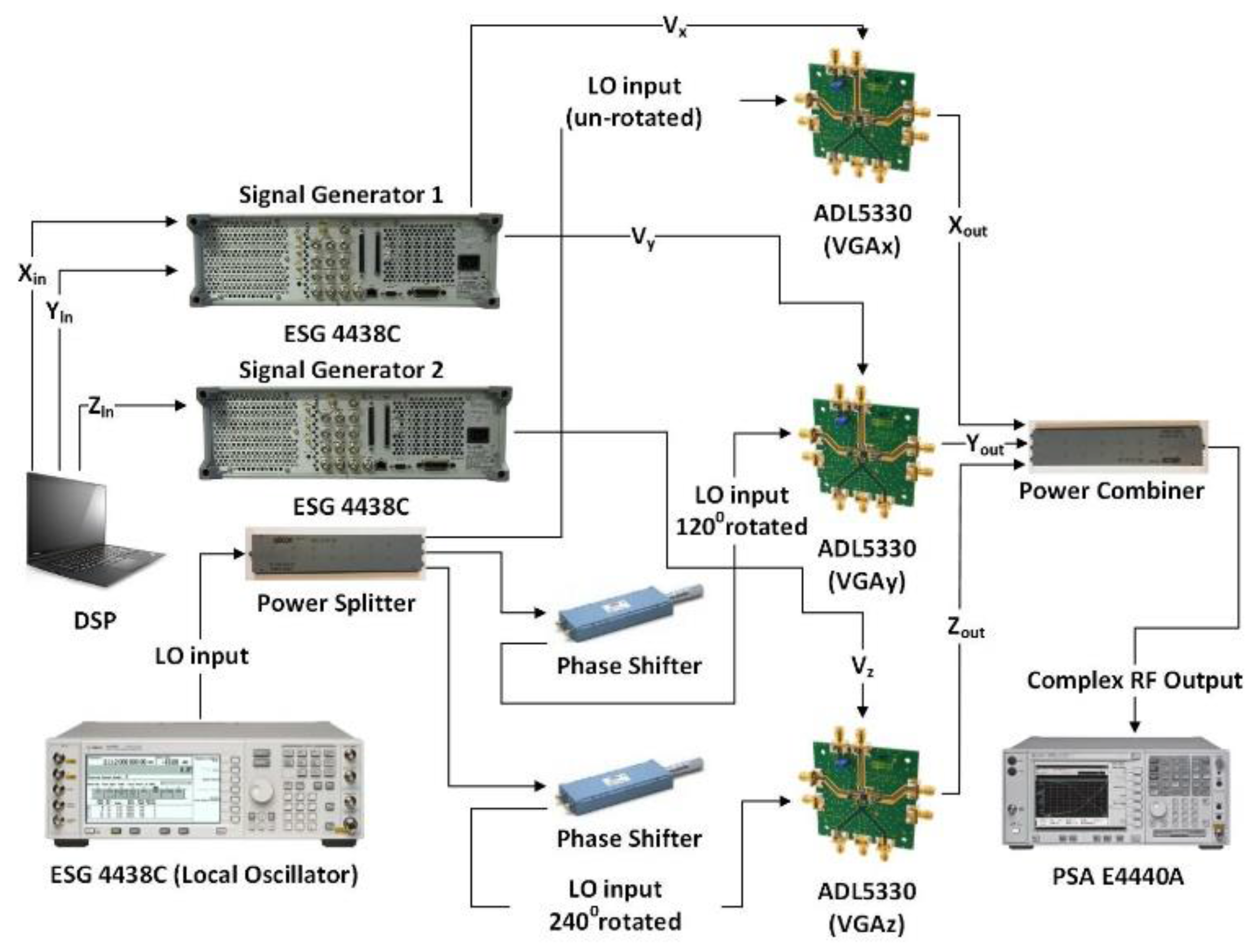
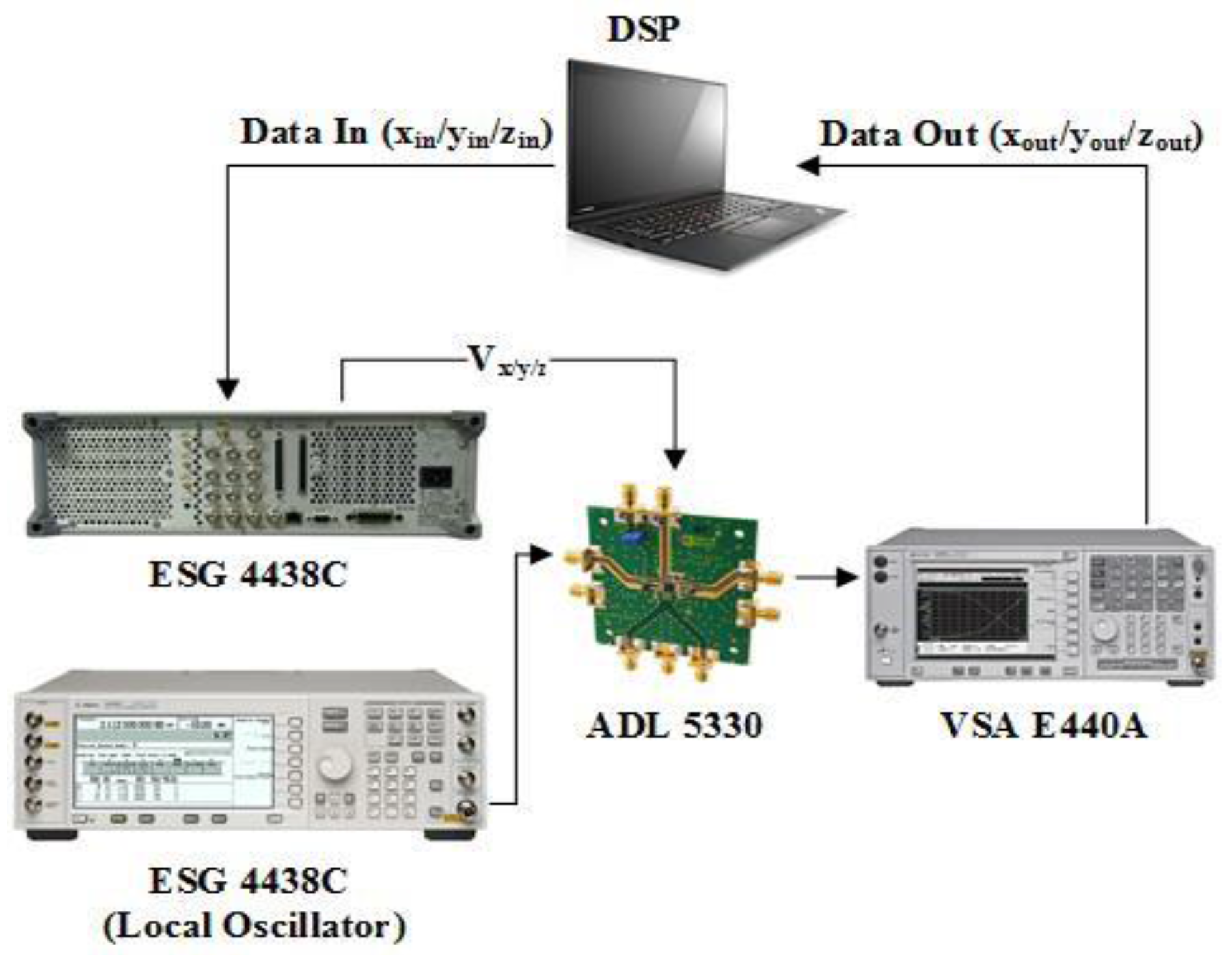
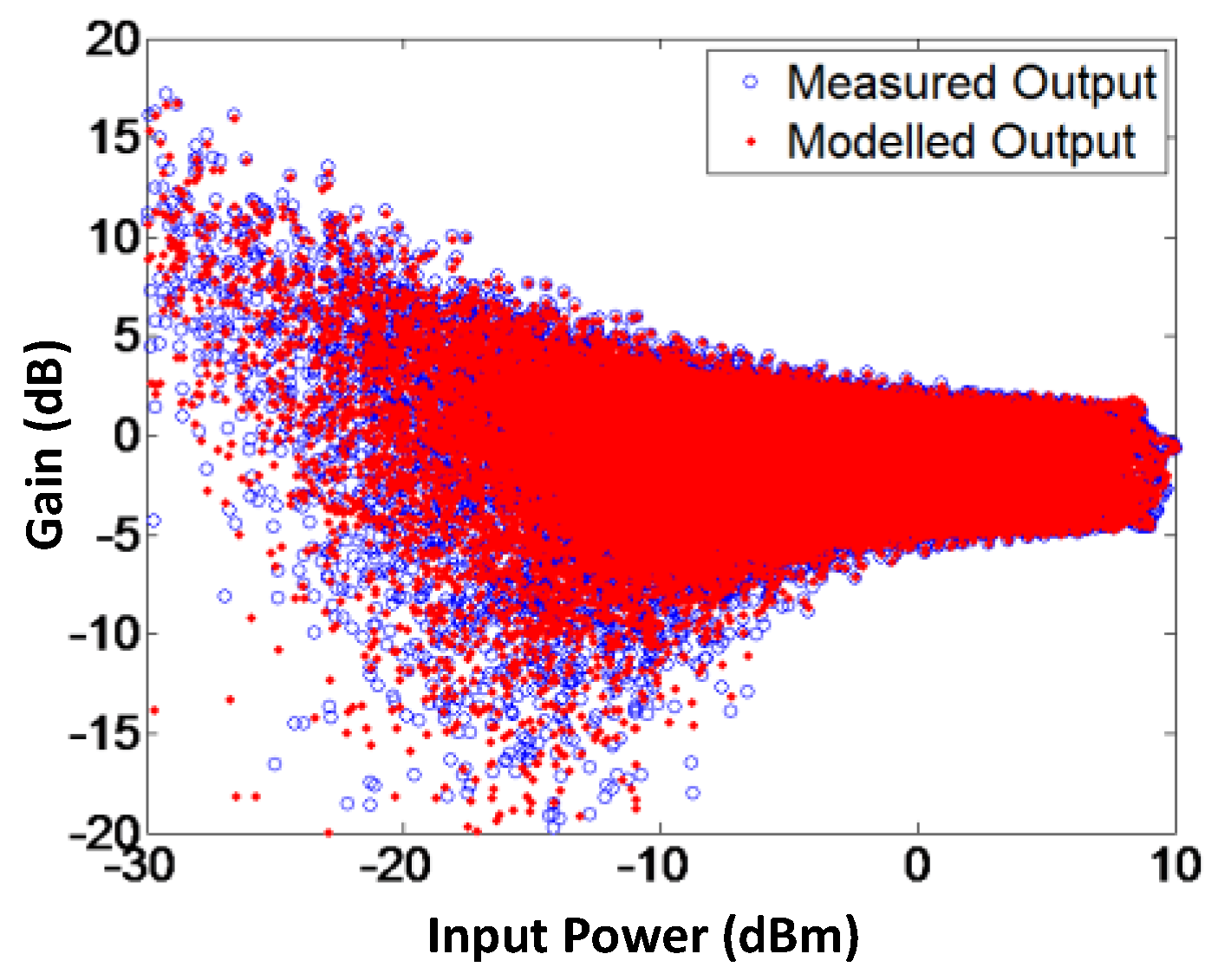
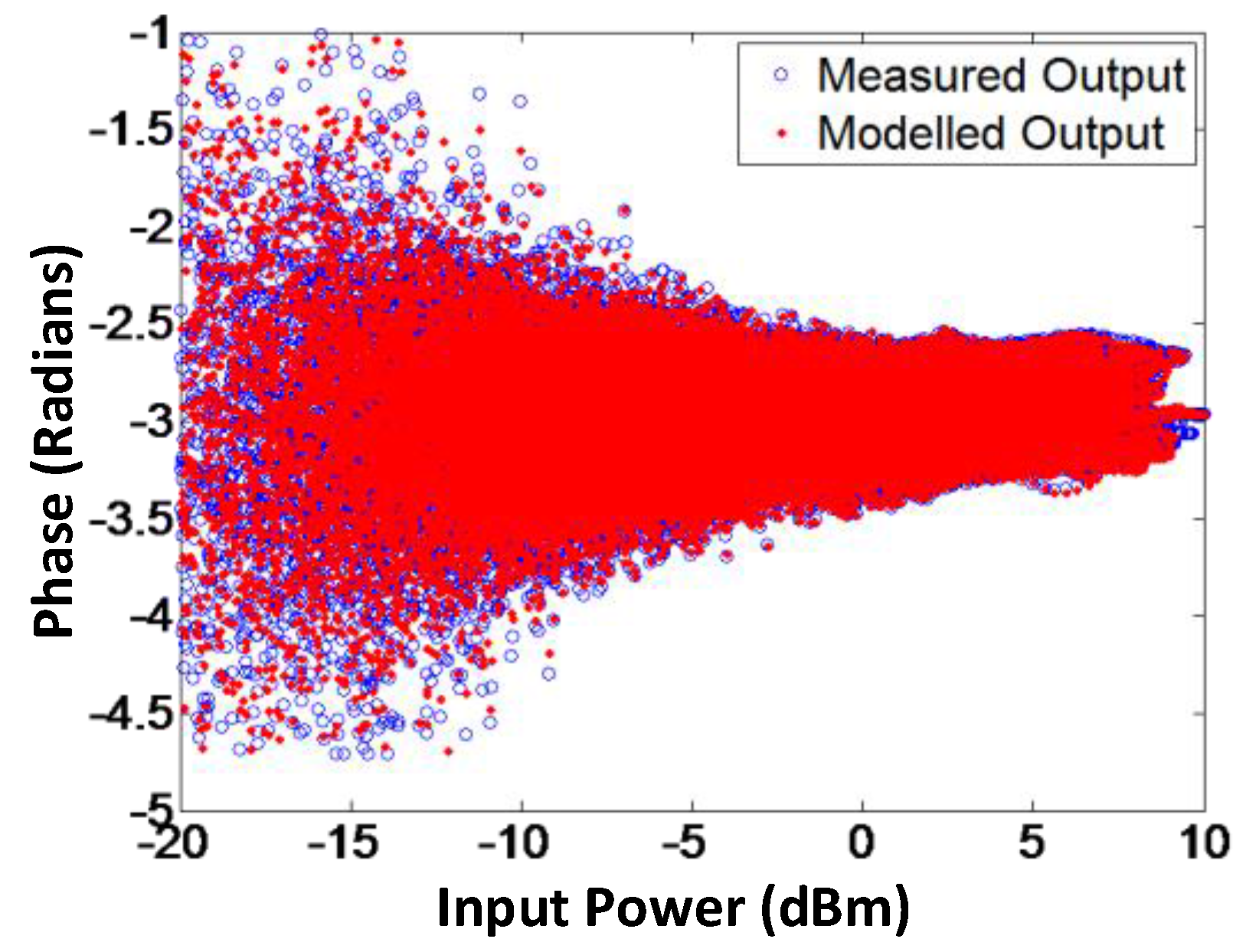
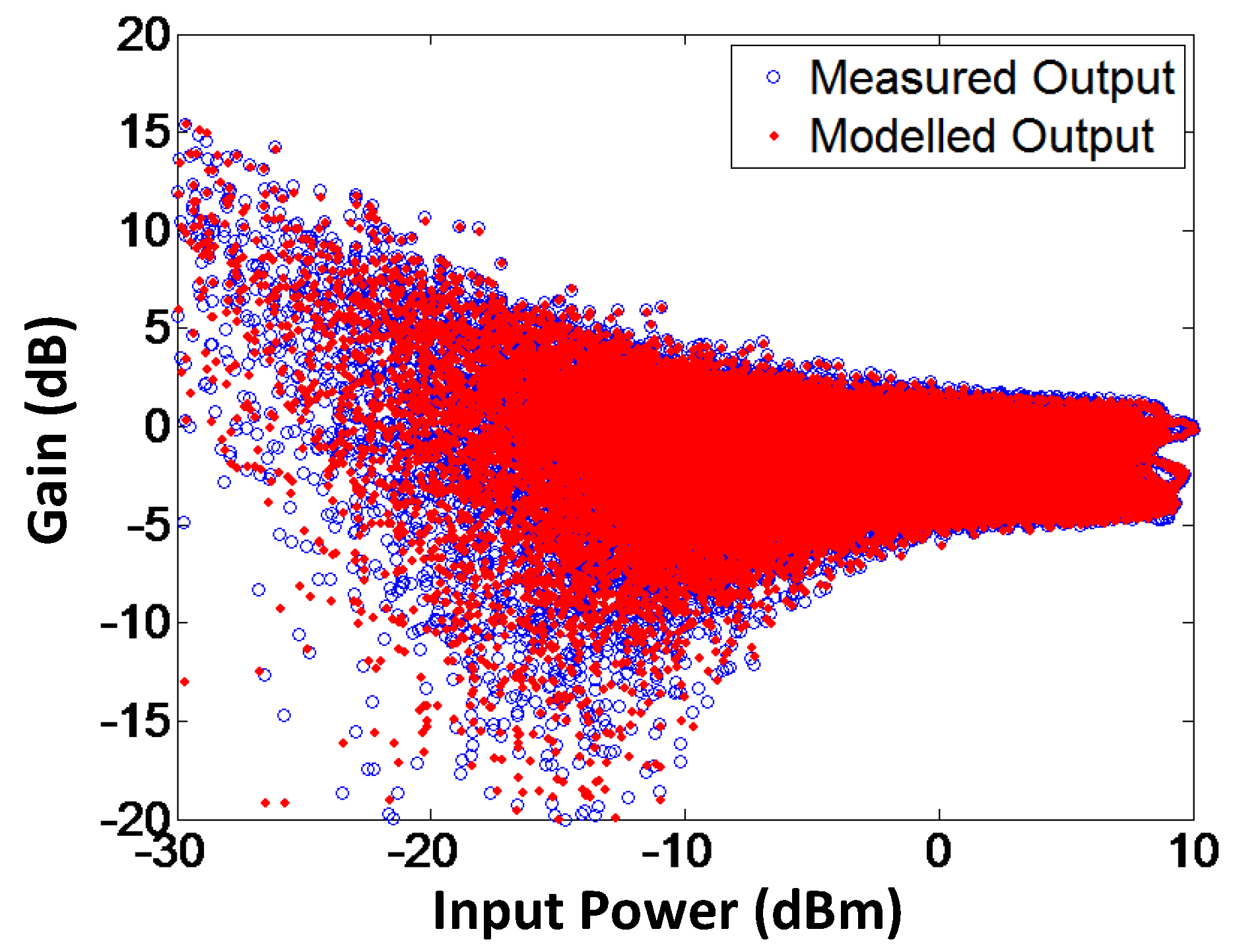
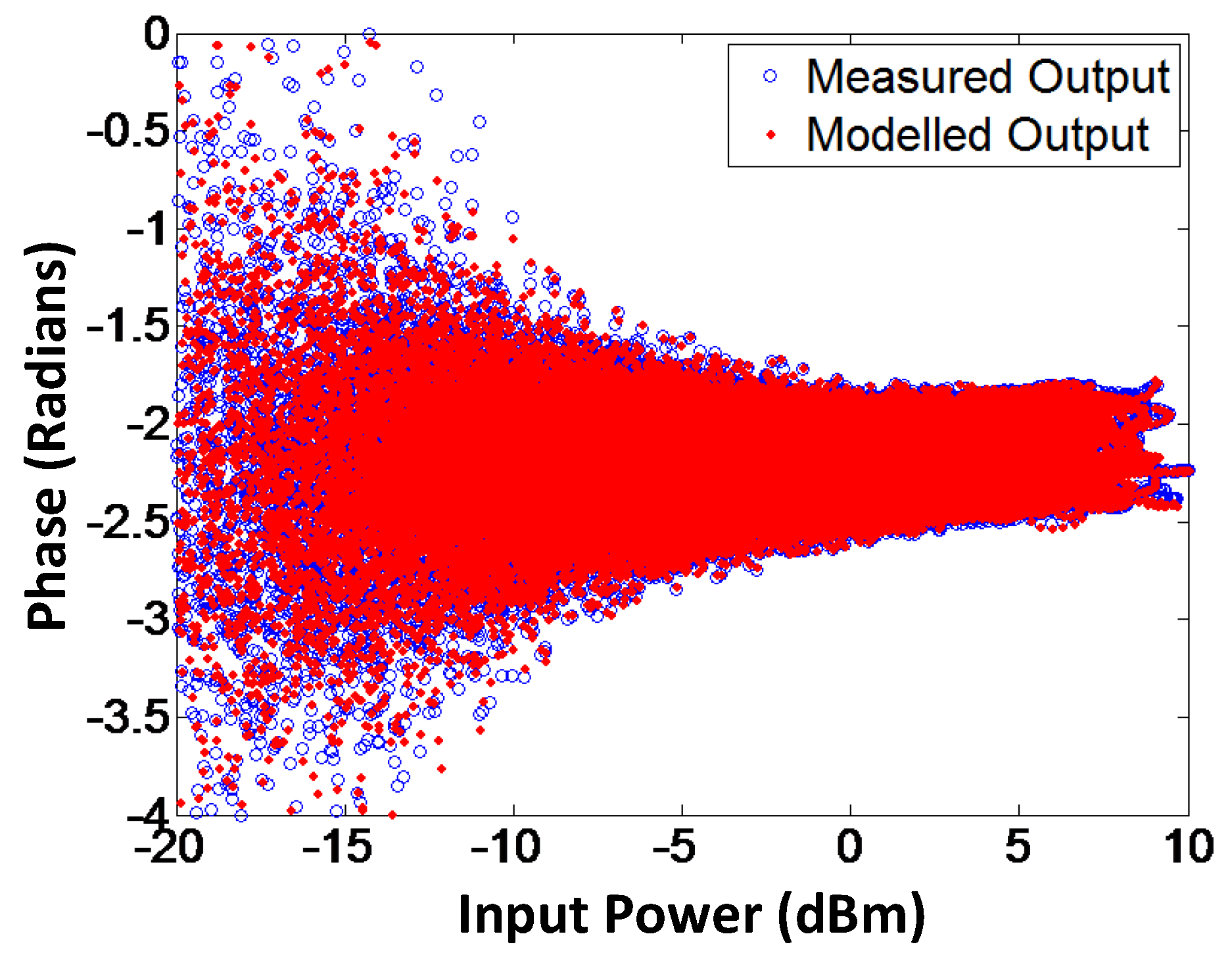
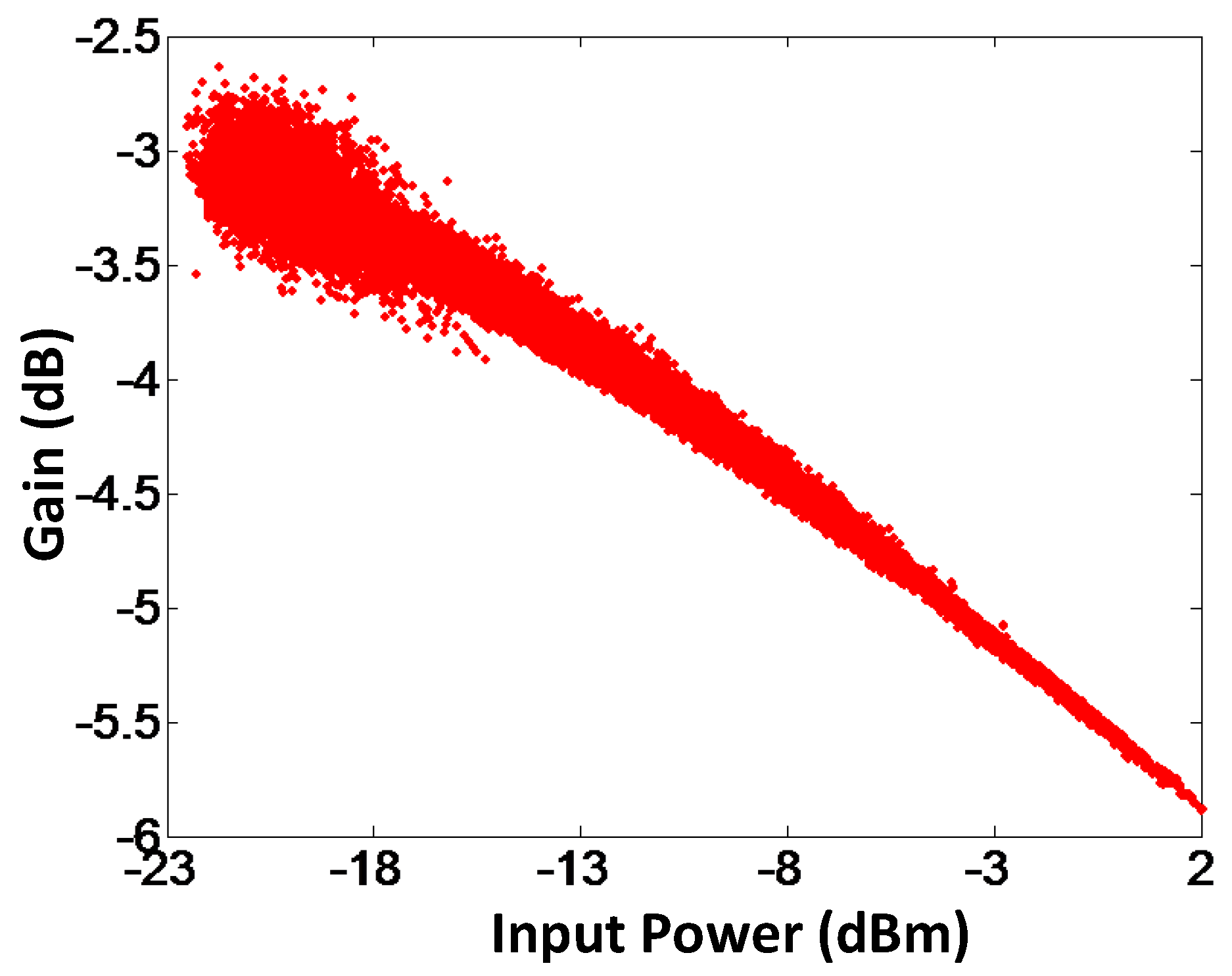
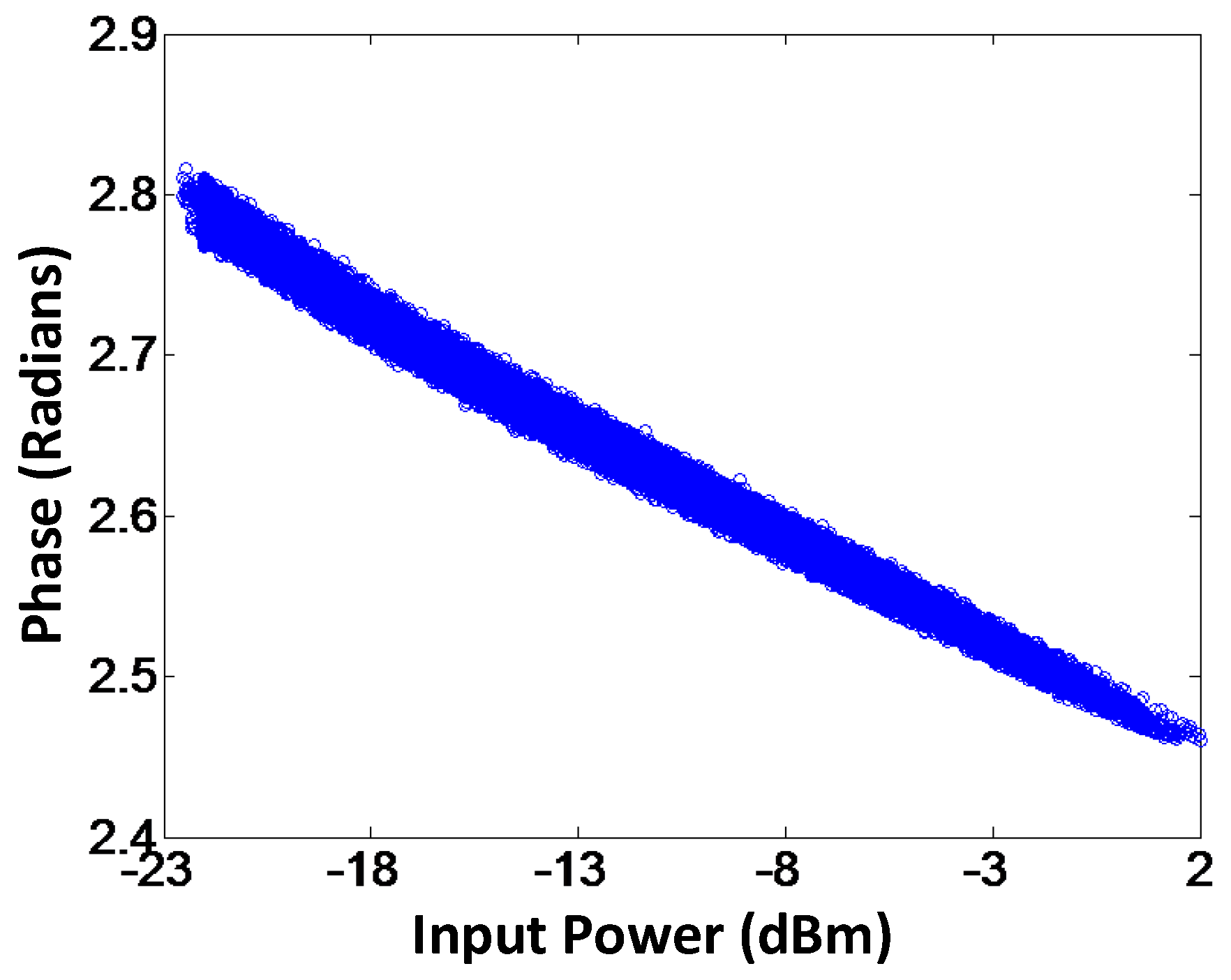
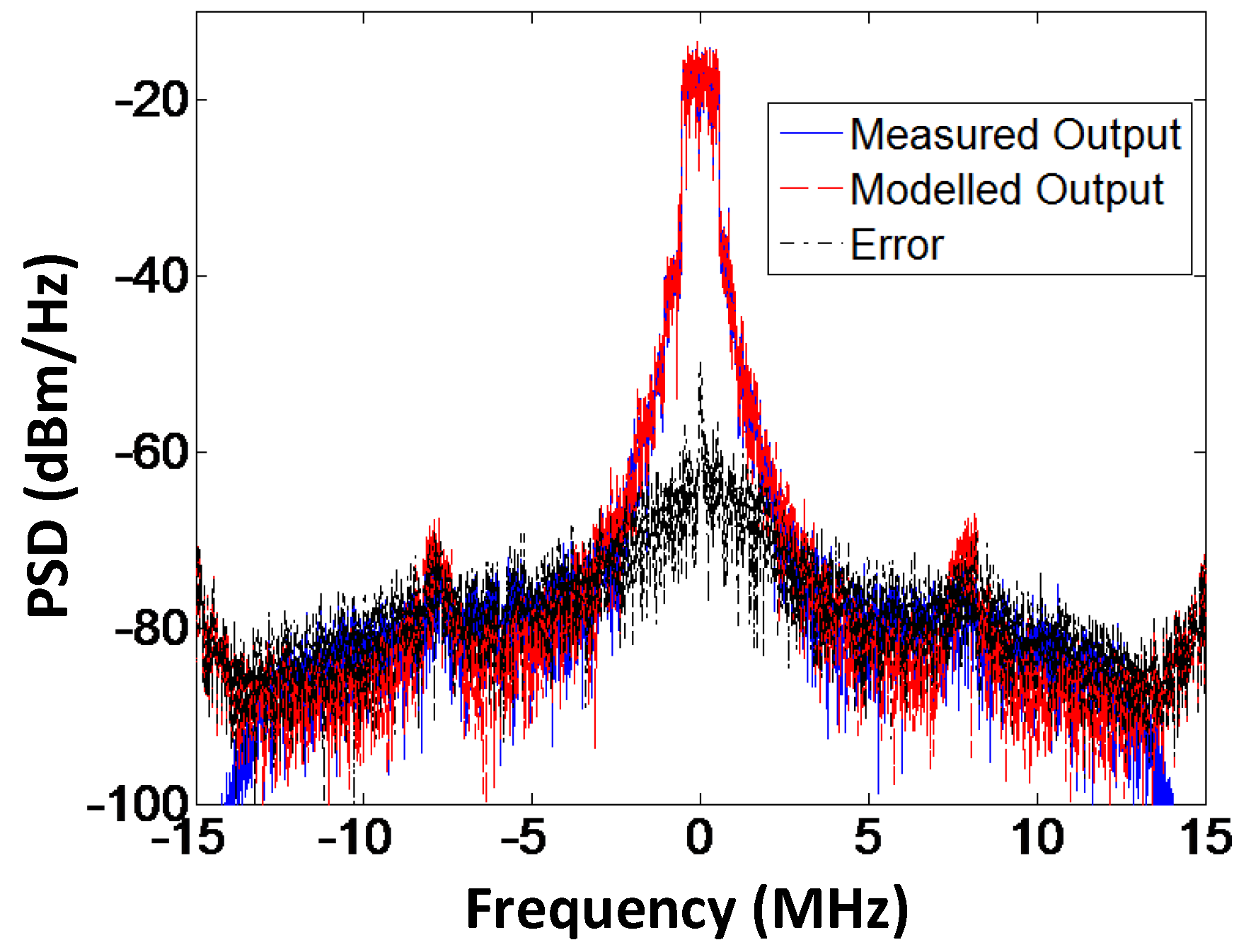
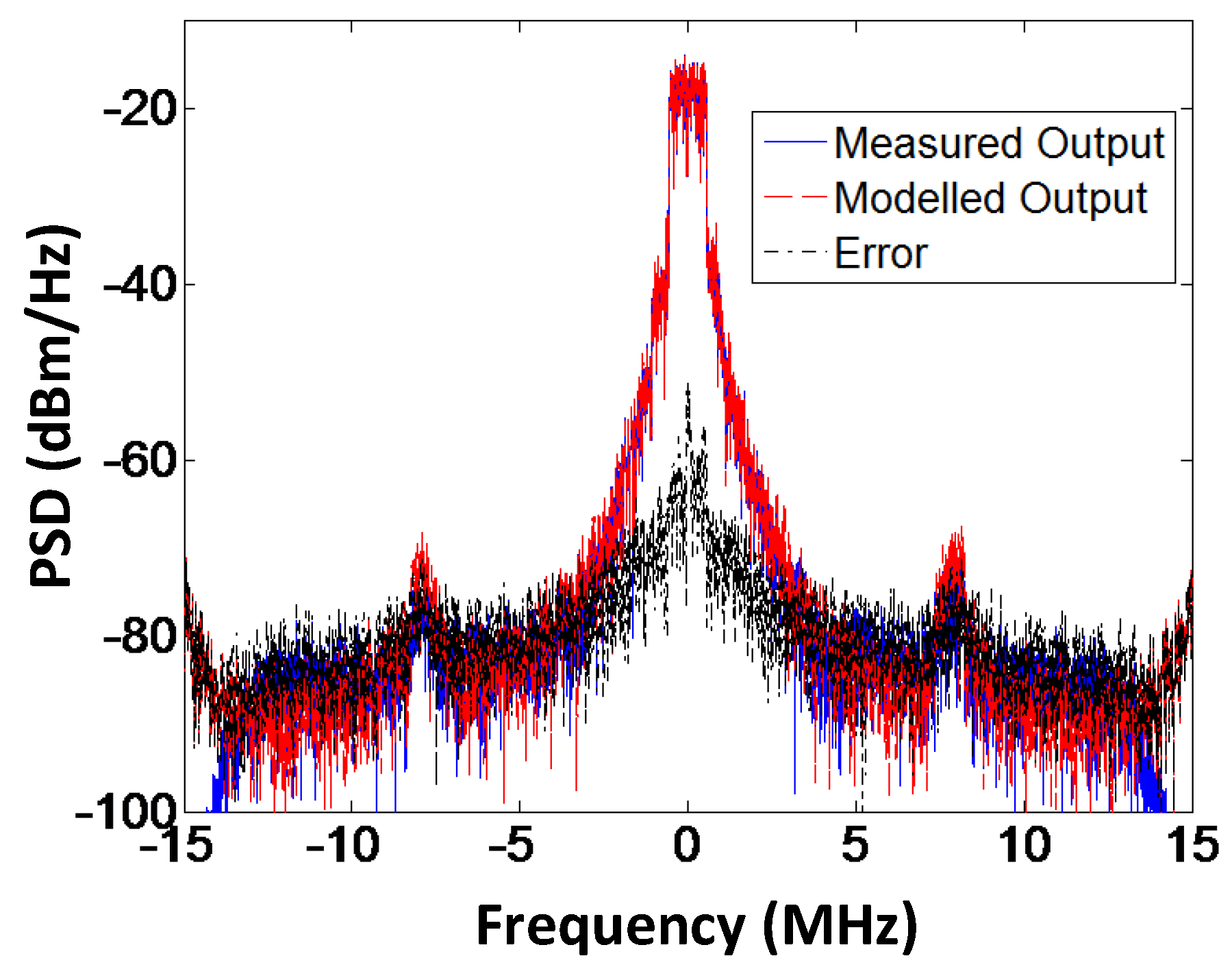
| Constants for | Constants for | Constants for |
|---|---|---|
| Constants for | Constants for | Constants for |
|---|---|---|
| Constants for | Constants for | Constants for |
|---|---|---|
| Specification | Value |
|---|---|
| Bandwidth on the gain control pin | 3 MHz |
| Gain Range | 60 dB |
| Control voltage range | 0–1.4 V |
| Operating frequency | 10 MHz–3 GHz |
| Linear-in-dB gain control function | 20 mV/dB |
| Specification | Value |
|---|---|
| Signal bandwidth (MHz) | 1.4 |
| Number of testing samples | 100,000 |
| Number of training samples | 10,000 |
| Training NMSE (dB) | −39.56 |
| Testing NMSE (dB) | −36.41 |
| Non-linearity order and Memory depth | K = 3, M = 2 |
| Specification | Value |
|---|---|
| Signal bandwidth (MHz) | 1.4 |
| Number of testing samples | 100,000 |
| Number of training samples | 10,000 |
| Training NMSE (dB) | −40.97 |
| Testing NMSE (dB) | −36.90 |
| Non-linearity order and Memory depth | K = 3, M = 2 |
| Specification | Digital Combining Architecture | Analog Combining Architecture |
|---|---|---|
| Signal bandwidth (MHz) | 5 | 5 |
| Number of testing samples | 100,000 | 100,000 |
| Number of training samples | 10,000 | 10,000 |
| Training NMSE (dB) | −34.48 | −34.56 |
| Testing NMSE (dB) | −31.93 | −32.08 |
| Non-linearity order and Memory depth | K = 3, M = 2 | K = 3, M = 2 |
© 2018 by the authors. Licensee MDPI, Basel, Switzerland. This article is an open access article distributed under the terms and conditions of the Creative Commons Attribution (CC BY) license (http://creativecommons.org/licenses/by/4.0/).
Share and Cite
Chatrath, J.; Aziz, M.; Helaoui, M. Forward Behavioral Modeling of a Three-Way Amplitude Modulator-Based Transmitter Using an Augmented Memory Polynomial. Sensors 2018, 18, 770. https://doi.org/10.3390/s18030770
Chatrath J, Aziz M, Helaoui M. Forward Behavioral Modeling of a Three-Way Amplitude Modulator-Based Transmitter Using an Augmented Memory Polynomial. Sensors. 2018; 18(3):770. https://doi.org/10.3390/s18030770
Chicago/Turabian StyleChatrath, Jatin, Mohsin Aziz, and Mohamed Helaoui. 2018. "Forward Behavioral Modeling of a Three-Way Amplitude Modulator-Based Transmitter Using an Augmented Memory Polynomial" Sensors 18, no. 3: 770. https://doi.org/10.3390/s18030770
APA StyleChatrath, J., Aziz, M., & Helaoui, M. (2018). Forward Behavioral Modeling of a Three-Way Amplitude Modulator-Based Transmitter Using an Augmented Memory Polynomial. Sensors, 18(3), 770. https://doi.org/10.3390/s18030770




